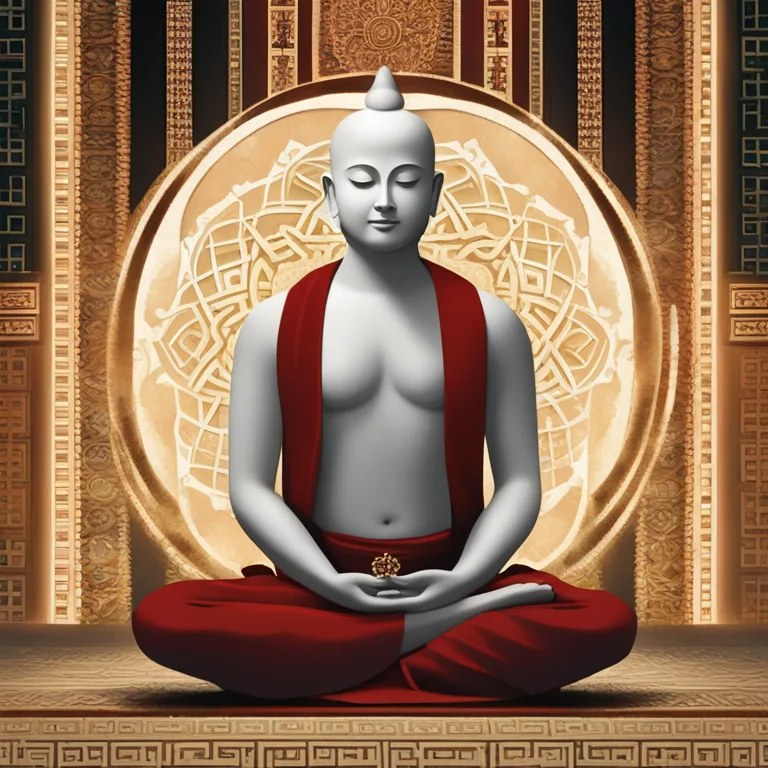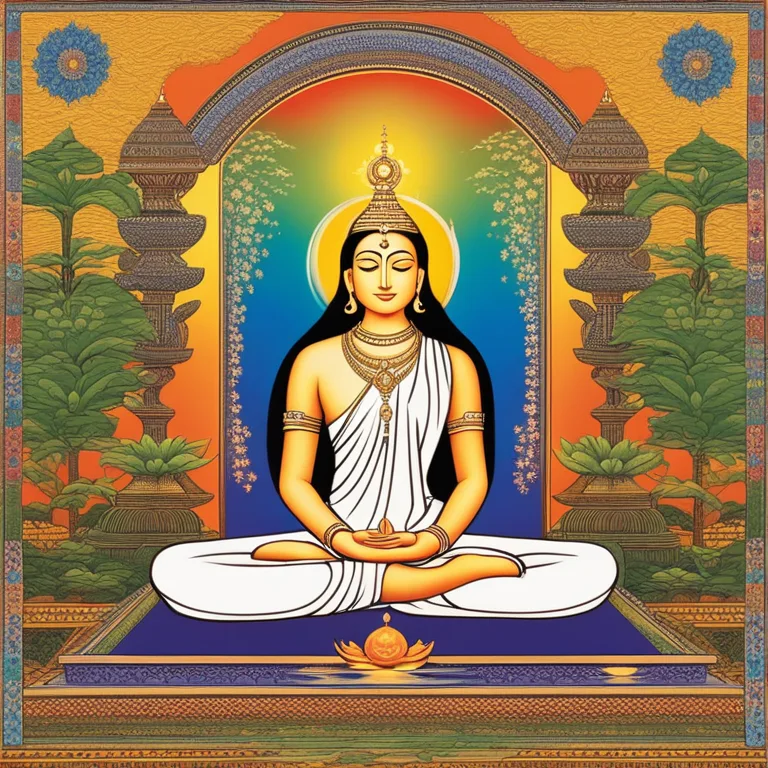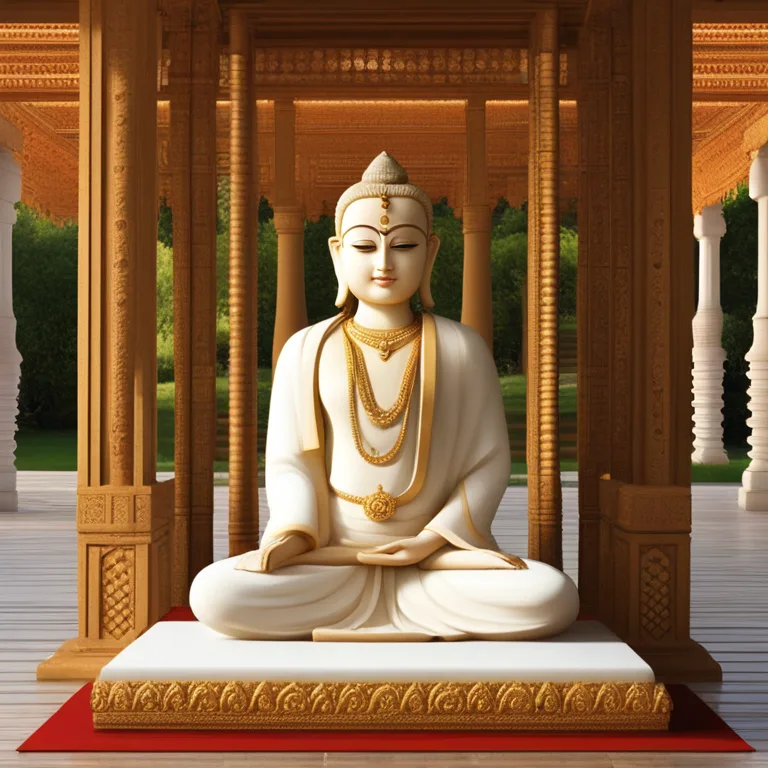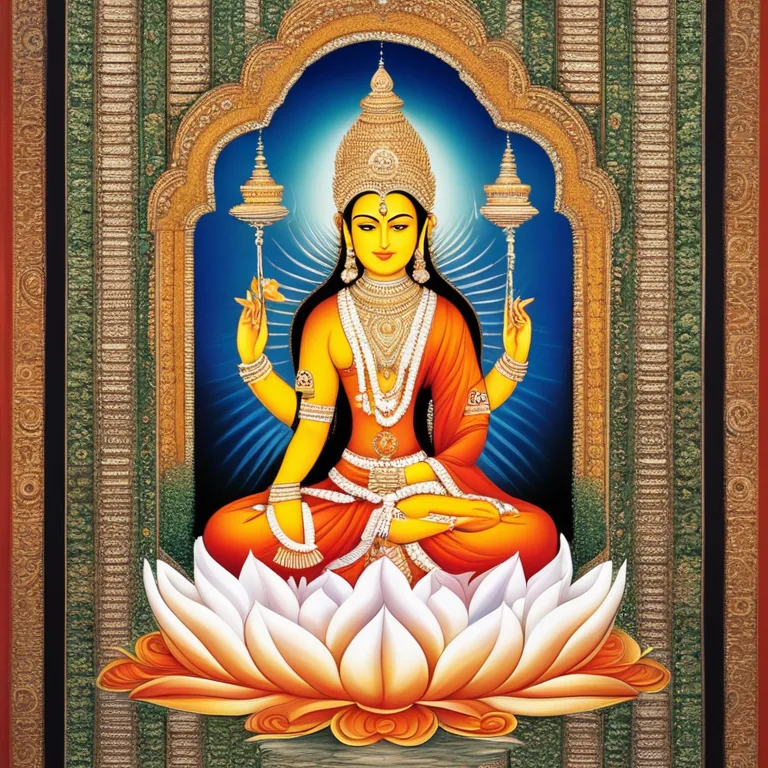
Jain Meditation Techniques
Discover the tranquility and spiritual enrichment offered by time-honored Jain meditation practices.
article by Hina Kurosawa
The Essence of Jain Meditation
Jainism is an ancient Indian religion that emphasizes non-violence, truth, and spiritual interconnectedness. Meditation in Jainism is not merely a practice for relaxation but a profound tool to attain self-realization and liberation of the soul. With roots stretching back to the teachings of the Tirthankaras (spiritual teachers), Jain meditation, known as Samayika, seeks to strengthen the practitioner's self-discipline and leads to the purification of the karma.

Preparation and Posture
Before delving into the meditative state, Jains perform Samayika, which involves assuming a comfortable position to create a stable foundation. Ideally, the Sukhasana or Padmasana positions are adopted, which require sitting cross-legged, ensuring the spine remains erect and the body still. Preliminary chants and mantras are recited to mentally prepare oneself, reinforcing the commitment to truth, non-violence, and the philosophy of Jainism.

Concentration and Mindfulness
Central to Jain meditation is the practice of concentration (Dharana) and mindfulness (Svadhyay). Practitioners focus their attention on a single thought or object to develop concentration. Mindfulness is practiced by methodically observing one's thoughts, sensations, and actions, fostering an awareness of the self's presence and processes without attachment or judgment. This mental vigilance is instrumental in the quest for spiritual awakening.

The Path of Visualization
Visualization techniques constitute a significant component of Jain meditation. Practitioners often visualize the color white, symbolizing purity and peace, to assist in the cleansing of their karma. Some Jains also visualize the image of a Tirthankara or their symbolic representation, such as the Jain emblem, during meditation to keep their focus aligned with the virtues espoused by their faith.

Practicing Austerity and Sensory Restraint
Jain ascetics observe various forms of austerity (Tapas) to intensify their meditation practices. These rigors, which range from fasting to restricting bodily movements, are seen as ways to transcend physical demands and sharpen the focus on spiritual matters. Sensory restraint (Pratyahara), wherein one voluntarily withdraws from sensory stimulation, is likewise crucial to mastering the discipline required for deeper levels of meditation.
Meditation and Ethical Living
Jain meditation extends beyond the individual practice and connects with the Jain way of life, which includes strict adherence to ethical principles like non-violence (Ahimsa), truthfulness (Satya), and non-stealing (Asteya). These ethical principles are intertwined with meditation, enhancing one's spiritual practice by integrating meditation into daily actions, ensuring that the tranquility cultivated during meditation carries through all aspects of life.
Reflection and Contemplation
The higher stages of Jain meditation involve deep introspection and contemplation (Anupreksha). Practitioners reflect on universal truths and the transient nature of worldly affairs. They contemplate the eternal qualities of the soul, striving to recognize their true, unblemished self that is separate from the temporary physical body and the web of karmic matter.
Published: 12/20/2023
Modified: 12/20/2023
More predictions
Come back here soon to learn more about yourself and your future


Vedic Meditation Simplified
Discover the ancient wisdom of Vedic meditation techniques for spiritual awakening and balance.


Hone Focus with Mindful Meditation
Discover meditation techniques that sharpen concentration and elevate mental clarity for a more productive life.


The Essence of Krishna Meditation
Discover the serene practice of Krishna meditation, a revered technique for inner peace and spiritual connection.